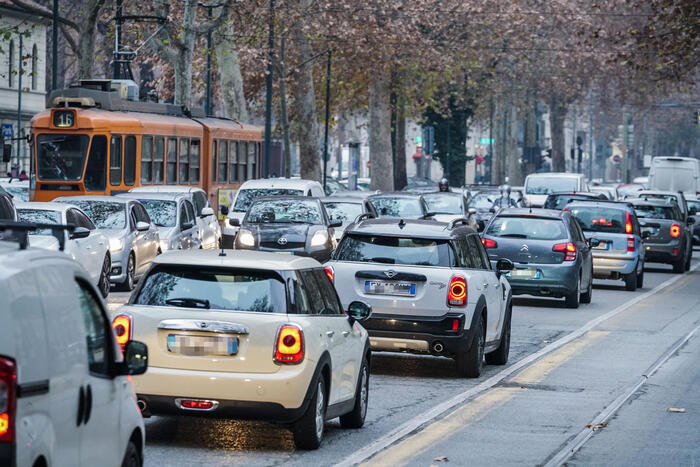Enlarge image
Traffic on the A81
Photo: Thomas Winz / Getty Images
With the new Euro 7 emissions standard, the EU Commission intends to introduce not only exhaust emissions but also specifications for emissions from brakes and tires.
In view of the increase in electric cars, brakes and tires are "on the way to becoming the main sources of particle emissions from vehicles," the commission said on Thursday in Brussels at the presentation of the new emissions standard.
She also presented proposals for minimum life expectancy requirements for electric car batteries.
The classification into pollutant classes was introduced in order to gradually reduce car emissions.
The emissions of hydrocarbons and nitrogen oxides as well as particulate matter are regulated, for example.
Regulation began in 1992 with Euro 1, and Euro 6 has been in force since 2015. Drivers can find out the emission class of their car from the vehicle registration document.
According to the Commission, the new Euro 7 rules will apply to cars and vans sold in the EU from July 2025 and from July 2027 to trucks and buses.
According to the Commission, the limits themselves will only be partially lower for cars and vans than with emission standard 6, which has been in force since 2015. For petrol engines, a maximum nitrogen oxide emission of 60 milligrams per kilometer should therefore continue to be permitted, for vehicles with diesel engines the limit will drop from 80 to 60 milligrams.
According to the proposal, certain limit values may not be exceeded in the future, even at temperatures of up to 45 degrees - and thus 7 degrees more than before.
For trucks and buses, the EU Commission wants to lower the limit values more.
Standard weakened under pressure from car manufacturers
According to the EU Commission, road traffic is the largest source of air pollution in cities.
It is estimated that particulate matter and nitrogen oxide pollution from road traffic caused tens of thousands of premature deaths in 2018 in EU countries and the UK.
Euro 7 is expected to reduce nitrogen oxide emissions from cars by an estimated 35 percent by 2035, and by more than 50 percent from buses and trucks.
Actually, the project should have been presented a long time ago, but this was postponed several times - and the norm was weakened under pressure from the car lobby.
The automotive industry had warned that overly ambitious targets could significantly increase the price of cars and other vehicles.
The new requirements should now take into account that the EU has already agreed to only allow the sale of new cars from 2035 that do not emit any greenhouse gases such as CO₂ during operation.
Certain limit values are therefore not lowered.
However, the EU states and the European Parliament still have to negotiate the project and agree on a common line.
jme/AFP/dpa












